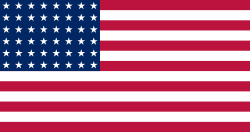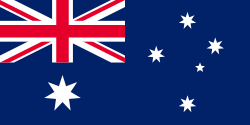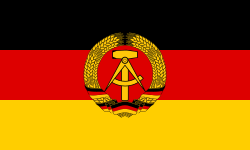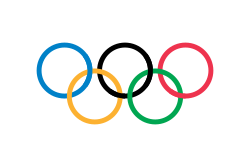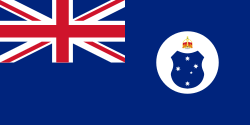John Naber

John Naber (* 20. Januar 1956 in Evanston) ist ein ehemaliger US-amerikanischer Schwimmer.
Naber ging in Italien und England zur Schule, wo sein Vater als Management-Consultant arbeitete. Er studierte mit einem Sportstipendium Psychologie an der University of Southern California, wo er seine ersten nationalen Rekorde aufstellte.[1] Höhepunkt dieser Entwicklung war sein Weltrekord über 200 m Rücken am 19. Juni 1976. Bei den Olympischen Spielen 1976 in Montreal avancierte er zum Nachfolger von Roland Matthes als dominierender Schwimmer über die Rückendistanzen und gewann die Goldmedaillen über 100 und 200 m Rücken. Er hatte hierfür eine neue effizientere Starttechnik entwickelt, die er erstmals bei den Olympischen Spielen präsentierte.[2] Da er auch Goldmedaillen mit der US-amerikanischen 4 × 100-m-Lagenstaffel und der 4 × 200-m-Freistilstaffel sowie die Silbermedaille über 200 m Freistil gewann, avancierte er zum erfolgreichsten Schwimmer dieser Spiele. Insgesamt stellte er bis 1976 44 Weltrekorde auf.[3]
Im Jahr 1982 wurde er in die Ruhmeshalle des internationalen Schwimmsports aufgenommen. Er arbeitet als Fernsehexperte, Motivationsredner und Trainer.[4]
Weblinks
- John Naber in der International Swimming Hall of Fame (englisch)
- Kurzbiographie von John Naber ( vom 16. Juli 2012 im Webarchiv archive.today) bei Hickok Sports (englisch)
Einzelnachweise
- ↑ Arnd Krüger: Amerikanischer Sport zwischen Isolationismus und Internationalismus. Leistungssport. 18(1988), 1, S. 43–47; 2, S. 47–50 aufg. 1. Februar 2017
- ↑ https://ojs.ub.uni-konstanz.de/cpa/article/view/2346/2200 aufg. 1. Februar 2017
- ↑ "Das große Olympia Lexikon", Sport-Bild vom 19. Juni 1996, S. 44
- ↑ Naber, John: From high school to the Olympic games: Learning from a variety of swimming coaches. International Journal of Sports Science & Coaching 1.2 (2006): 125–126.
| Personendaten | |
|---|---|
| NAME | Naber, John |
| KURZBESCHREIBUNG | US-amerikanischer Schwimmer |
| GEBURTSDATUM | 20. Januar 1956 |
| GEBURTSORT | Evanston, Illinois |
Auf dieser Seite verwendete Medien
Olympic Rings without "rims" (gaps between the rings), As used, eg. in the logos of the 2008 and 2016 Olympics. The colour scheme applied here was specified in 2023 guidelines.
US Flag with 48 stars. In use for 47 years from July 4, 1912, to July 3, 1959.
Flag of Australia, when congruence with this colour chart is required (i.e. when a "less bright" version is needed).
See Flag of Australia.svg for main file information.Die Olympiaflagge der gesamtdeutschen Mannschaft von 1960 und 1964, sowie beider deutschen Mannschaften 1968.
Die Olympiaflagge der gesamtdeutschen Mannschaft von 1960 und 1964, sowie beider deutschen Mannschaften 1968.
Die Staatsflagge der Deutschen Demokratischen Republik, vom 1. Oktober 1959 bis 3. Oktober 1990
Flag of Canada introduced in 1965, using Pantone colours. This design replaced the Canadian Red Ensign design.
Olympic Rings without "rims" (gaps between the rings), As used, eg. in the logos of the 2008 and 2016 Olympics. The colour scheme applied here was specified in 2023 guidelines.
Flagge des Vereinigten Königreichs in der Proportion 3:5, ausschließlich an Land verwendet. Auf See beträgt das richtige Verhältnis 1:2.
Flagge des Vereinigten Königreichs in der Proportion 3:5, ausschließlich an Land verwendet. Auf See beträgt das richtige Verhältnis 1:2.
(c) I, Cmapm, CC BY-SA 3.0
The flag of the Soviet Union (1955-1991) using a darker shade of red.
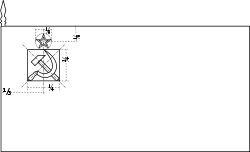
(c) I, Cmapm, CC BY-SA 3.0
The flag of the Soviet Union (1955-1991) using a darker shade of red.

Olympische Flagge
Flag of the Germans(1866-1871)
Variant version of a flag of Japan, used between January 27, 1870 and August 13, 1999 (aspect ratio 7:10).
Flag used in 1908–12 Olympic games to represent Australasian team

